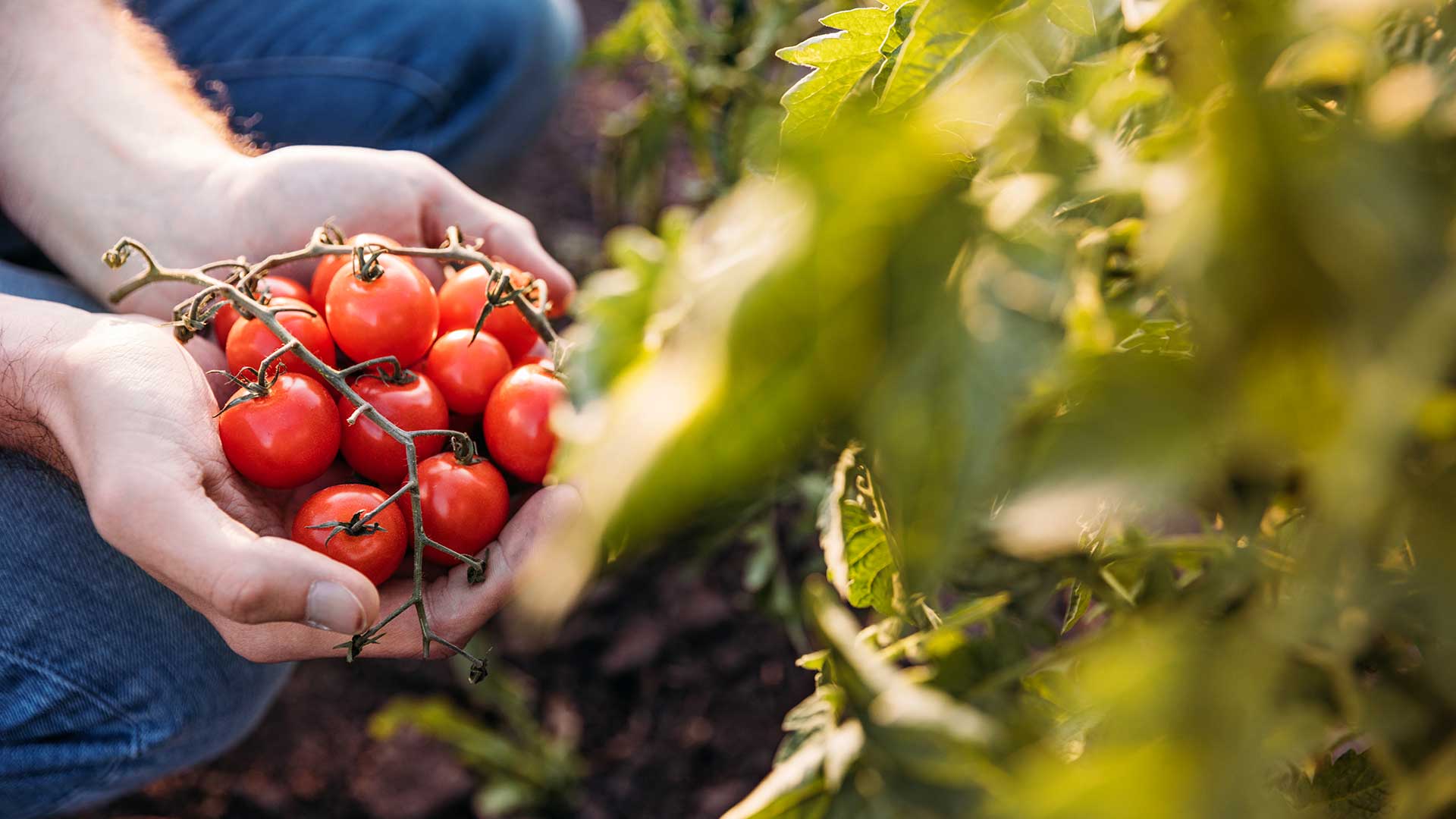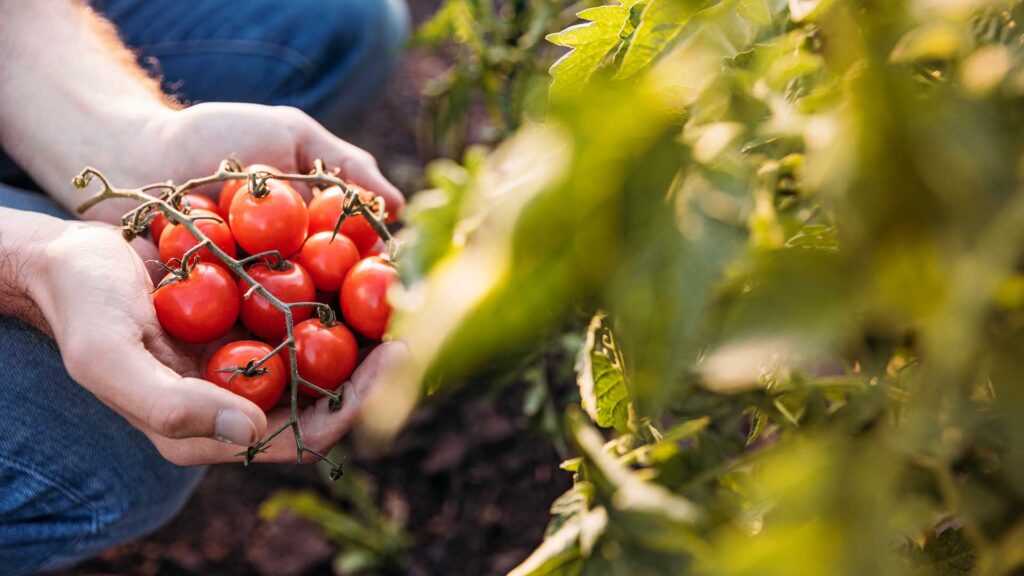Warm season vegetables are, not surprisingly, suited for warm soil and air temperatures. When contemplating the appropriate timing for outdoor planting, note last frost dates, current and expected soil temperature readings as well as both day and evening air temps. Not to be forgotten in the equation are days to maturity for each desired crop. Warm season crops tend toward long growing cycles that will dictate how many crops may be planted in each growing year – generally providing you one per year. Because of this long growth period, starting seeds indoors for outdoor transplanting is the best method for successful warm season crop production in cooler climates. Monitor soil temps and move seedlings outside when in-ground temps are 60 – 75 degrees F with air temps above 50 degrees F. It is possible to plant seedlings outside earlier if you practice soil warming techniques, and/or use row covers, cloches, mini greenhouses, etc. If you ignore the recommended soil and air temps, planting warm season crops in cold soil, or when air temps are below 50-degerees F, it may not kill the plants but it often results in season long stunting of plant growth with limited fruit development. On the other end of the temperature spectrum, warm season plants will struggle with pollination and subsequent fruit production when air temperatures are above 85-90 degrees F. If Momma Nature is feeling benevolent and night temps remain above 50 degrees F, with day temps under 85 degrees F, blossoms and fruit will maintain healthy production cycles.
Bean (Phaseolus vulgaris) – pH 6.0 – 6.8; full sun; well-drained soils; plant seeds in warm soil (at least 60 degrees F and after last spring frost) 1” deep, 2” apart, thinning to 4” – 8” apart when seedlings are about 4” high; space rows 18” – 36” apart. Do NOT pull plants when thinning, remove via cutting to minimize root disturbance. Bean seeds do not like to be handled once germination has begun. Plant directly into the ground and do NOT presoak. Darker bean seeds tend to tolerate a bit lower soil temp for germination – around 55 degrees F. Pole beans (indeterminate) will need a strong support system and initial training/tying. Bush type (determinate) are a bit more self-contained and need no additional support to thrive and produce. Harvest every few days to continue production of blossoms and edible pods. Timing will vary for pods, immature seeds, or for dry storage – follow variety recommendations. Replant beans every two to three weeks after initial planting to maintain a long harvest season. Planting location should be rotated every two years to minimize pest and disease issues. Beans do well when planted after lettuce, radish, peas, and/or spinach. In general, separation from crops in the allium family is a good move. Stay away from nitrogen fertilizers – unnecessary.
Corn (Zea mays) – pH 6.0 – 6.8; full sun; rich, well-drained soil. Soil temperatures of at least 65 degrees F are needed to ensure germination. Sow seed 1” deep, 4” – 6” spacing in rows 30” – 36” apart. For the home gardener, the best pollination and production results from planting in blocks of 4 rows, each 5’ – 10’ long. Thin seedlings to 8” – 12” spacing when about 4” high. Plant a few sequential crops every two weeks after initial planting for an extended harvest as each stalk will only produce two to four cobs of corn (variety dependent). There are some great new varieties bred for containers that are fun to try and will certainly add an interesting twist to patio gardening. Peas and lettuces play well when interplanted with corn. Tomatoes – not so much.
Cucumber (Cucumis sativus) – neutral pH; fertile, well-drained soil; like a soil temperature 70 degrees F or higher before planting into the ground. Unless you have a lovely, long growing season, start the seeds indoors about two weeks before the last spring frost. Transplant seedlings to outdoor beds/mounds only when the soil temp is sufficiently warm. If you want to speed up soil warming, cover the beds/mounds with black plastic for a couple of weeks before the last spring frost and prior to moving plants outdoors. After seedlings are in and up, monitor temperatures and provide row cover or a cloche if night temps drop below 50 degrees F. Be aware – they are quite cold sensitive. When seedlings are 4” – 5” high, thin (cut, do not pull) leaving the best 2 plants per mound. Bush type cucumbers are determinate and do not need trellis support. Vining cucumbers need support and early training to get them properly directed. Harvest as they ripen to encourage continued production. To help control diseases and pests, a rotation of at least two years is recommended. While cucumber flavor is enhanced by German chamomile, they do not enjoy spending any time with most other aromatic herbs.
Eggplant (Solanum melongena) – pH anywhere from 5.5 to 7.0; warm soil of 75 to 90-degrees F best for successful germination; sow seeds ¼” deep, seedlings should be spaced 18” – 24” apart, allowing a row width of 30” – 36”; start seeds indoors six weeks before last spring frost, harden plants off and transplant outdoors two to three weeks after last spring frost. Starting about a month to two weeks before first fall frost, pinch and remove blossoms to direct plant resources to any ripening fruit. Lettuce does well interplanted with eggplant.
Pepper (Capsicum annuum) – pH 5.8 to 7.0, they are somewhat pH tolerant but do prefer an acid range; germination may occur in soil temperatures as low as 55-degrees F, but peppers prefer 80-degrees F. Sow seeds ¼” deep about 8 to 10 weeks before the last spring frost, hardening off and transplanting outdoors two to three weeks after last spring frost. For row planting, space plants 12” – 24” apart, with 24” – 36” between rows. If planting in containers or raised beds, allow 14” to 16” between plants. Peppers are particular in their water needs – too much or too little will result in calcium uptake issues. Be consistent in watering. Night temperatures below 60-degrees F, or above 75-degrees F, will result in reduced fruit set. Avoid planting with beans and fennel. Peppers do play well with basil, beet, carrot, onion, spinach, and tomato.
Squash (Cucurbita) – pH 5.8 to 6.8; direct sow seed after the soil has warmed to at least 70-degrees F. If planting in rows sow seed 1” deep and about 2’ apart. When plants are about 3” to 4” high, thin plants and rows to about 6’ to 10’ apart. The technique for thinning squash is to cut unwanted plants for removal – do not pull. If using a mound planting system, plant seeds (or transplanted seedlings) three to five per mound. After they reach 3” to 4” in height, thin out the weakest, leaving 2 or 3 of the strongest looking plants. Mound planting is a great method to help control insect issues making sure to allow plants about 50 feet square to accommodate the vine sprawl. Squash (which includes pumpkins, summer, or soft skin, and fall, or hard skin types) do not like any root disturbance once they have germinated. Squash plays well with onions, peas, and beans, but despise living near potatoes.
Tomato (Solanum lycopersicum) – pH 6.0 to 6.8 but will tolerate a more acidic pH level. Sow seed 1/8” deep, indoors, about five to seven weeks before last spring frost. Seeds will germinate at soil temperatures of between 55 and 70-degrees F. Maintaining a 70-degree F soil temperature when growing out the plants will encourage good development. Tomato plants, both young and mature, will react in a variety of ways to temperature fluctuations. Provide protection/cover if soil and air temps are under 50-degrees F to minimize vegetative and fruit decline. If cold damage occurs it will last for the entire season. Temps rising above 85/90-degrees F will inhibit fruit set in the short term although more blossom and subsequent fruit can develop if seasonal conditions cooperate. When transplanting seedlings to the outdoors, bury the plant up to the first set of leaves to encourage strong stems. Rotate location at least every two years. Avoid planting with beet, cabbage, cauliflower, corn, kale, pea, potato, and rosemary. Tomatoes play well with basil, beans, carrot, celery, chives, cucumber, lettuce, melon, onion, pepper, radish, spinach, and thyme.

